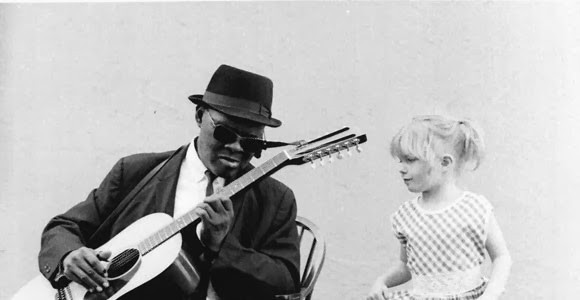 Rev. Gary Davis and Meegan Ochs, ca. late-1960s, photo by Alice Ochs
Rev. Gary Davis and Meegan Ochs, ca. late-1960s, photo by Alice Ochs
The track titled “Samson and Delilah,” also powerfully known as “If I Had My Way,” stands as a profound example of how music can carry layers of meaning, history, and emotion. This spiritual song, deeply rooted in African American tradition, resonates with listeners across genres and generations. While versions abound, Reverend Gary Davis’s rendition remains definitive, a masterclass in raw emotion and spiritual depth. Like many songs born from the crucible of American slavery, “Samson and Delilah” employs coded lyrics, allowing for the safe expression of complex feelings, ranging from personal sorrow to collective defiance. Understanding this code, alongside the rich history of the song, reveals a tapestry of musical and cultural significance that continues to captivate and inspire. Let’s delve into the story of this remarkable song, often referred to as the “My Way Song,” and uncover its enduring power.
Reverend Gary Davis and His Signature Spiritual
While “Samson and Delilah” has been interpreted by a diverse array of artists, it is inextricably linked to the Reverend Gary Davis. His 1961 album, Harlem Street Singer, features what many consider the quintessential performance of this powerful spiritual. Though this exploration is centered on the song itself, understanding its place within Davis’s repertoire is crucial. William Lee Ellis’s 2010 PhD thesis, the first comprehensive analysis of Reverend Gary Davis’s music, underscores the song’s importance in Davis’s body of work. Ellis identifies “Samson and Delilah” as “the most important song, sacred or secular, in Davis’ repertoire,” especially after Peter, Paul, and Mary’s 1962 cover brought it to a wider audience.
Listeners intuitively grasp the transformative and inspirational nature of Davis’s arrangement. Ellis’s research confirms this, highlighting the song’s central role for Davis. Importantly, the royalties Davis received from Peter, Paul, and Mary’s hit version provided him with financial stability later in life, allowing him to continue teaching music and spreading his gospel message.
Reverend Gary Davis – from http://www.culturalequity.org
The story of the song’s publishing further illuminates Davis’s relationship with the material. As Ellis recounts, in a meeting with entertainment lawyers, Davis was directly asked if he authored the song. His emphatic “no” was followed by the explanation that the song, like many of his religious pieces, was “revealed” to him. This anecdote reveals a crucial aspect of Davis’s artistry: while his arrangement was undoubtedly his own and deserving of recognition, his source material stemmed from a deep well of tradition, transcending individual authorship and commercial concerns. Davis, as Ellis notes, drew from “a variety of traditional, popular, and personal sources” for his religious songs, mirroring an “assemblage method in African American religious song” that incorporated Bible verses, hymns, personal compositions, and familiar refrains to foster communal identity.
Delving into the Roots: Tracing the Song’s Provenance
Many, like myself, first encountered “Samson and Delilah,” the powerful “my way song,” through the Grateful Dead’s rendition. Bob Weir himself acknowledged adapting the band’s version directly from Gary Davis. However, the song’s origins extend far beyond Davis, reaching into the depths of African American musical heritage. While definitive proof of its antebellum spiritual origins remains elusive, circumstantial evidence strongly suggests this to be the case. The song resonates with the themes, lyrical style, and coded messaging characteristic of spirituals created by enslaved people.
To fully appreciate “Samson and Delilah,” we must consider this broader context. The song likely emerged from a collective experience, evolving through oral tradition and community singing before being formally recorded or attributed to a single author. This communal genesis is a hallmark of many spirituals and folk songs, reflecting a shared history and collective expression. The very essence of the “my way song” lies in its ability to connect with fundamental human emotions and experiences, transcending individual ownership and resonating across time and cultures.
Continue to page 2>>>
Share this…


